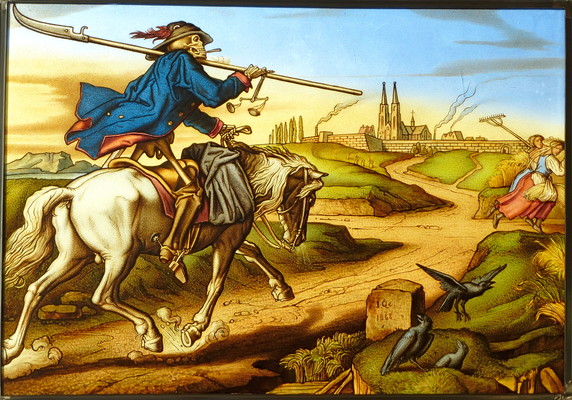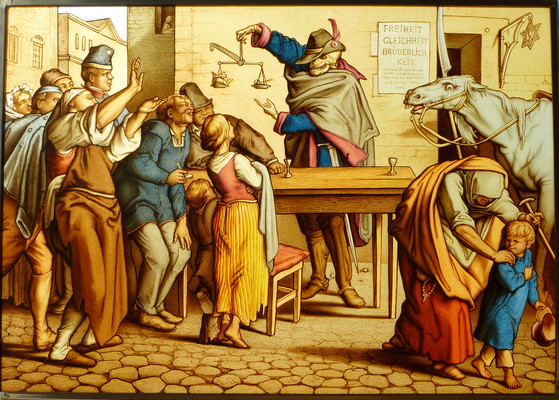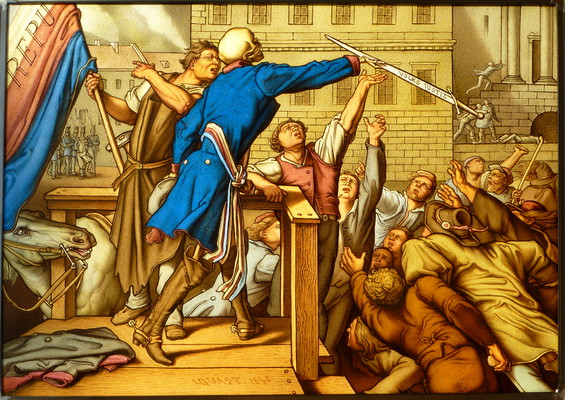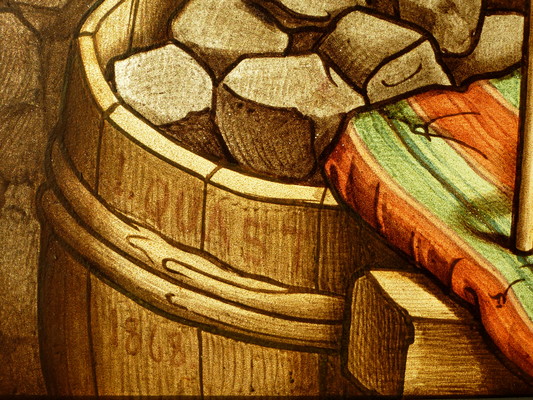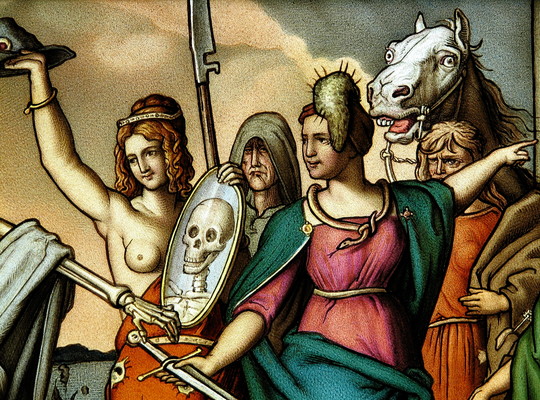Johann Zacharias Quast (1814-1891)
Alfred Rethel (1816-1859)
'Another Dance of Death'
Six-part cycle of glass-paintings after the handbill series by Alfred Rethel (1816–1859) of 1848
Prague, 1868
Each panel 24 x 32.5cm
Signed and dated
Clear-glass unipartite panels, painted with black vitreous paint, transparent gouaches, enamels, and yellow silver stain
The Smith Museum of Stained Glass Windows, Chicago
Dokumentation
With this six-part woodcut series Alfred Rethel was associating himself with the Dances of Death by Hans Holbein the Younger and the Riders of the Apocalypse by Albrecht Dürer. We are dealing not only Rethel’s most famous work, but with one of the most significant printed graphic works of the nineteenth century, which has here been translated into colourful glass-painting. The panels depict the following.
1. Death Rising from the Grave
2. Death Riding into Town
3. Death in Front of the Tavern
4. Death Presents his Sword to the People
5. Death on the Barricades
6. Death as Victor
The German painter and poet Robert Reinick (1805–1852) wrote a descriptive verse for each one of these six Dance of Death prints.
Rethel had lived through the uprisings in Düsseldorf and Aachen in 1848, and with this woodcut series and its extensive iconographic programme polemicized against the excesses of the German revolution, mainly against the democrat and republican Friedrich Hecker (1811–1881). Rethel endowed Death with the famous attributes by which the demagogue and Baden revolutionary would have been recognized – his calabrese hat (known as the ‘Hecker hat’ for the Hecker Uprising that took place in Baden in 1848), and his black bucket-top boots. Rethel changed from being an enthusiastic proponent of democratic ideals, to a liberal reactionary, opposing any form of revolution, and eventually adopted a stance in favour of moderate progress.
The Bohemian porcelain- and glass-painter Johann Zacharias Quast will have known Rethel’s handbill series, but the question as to why he translated it into colourful glass-painting twenty years later remains open. Perhaps the glass cycle was created to commemorate the failed Prague Whitsun Uprising of 12–17 June 1848, during which the Czech nationalists revolted against their imperial overlords in Austria but were stamped down.
Literature
The essential work of reference is Karin Groll’s Alfred Rethel: ‘Auch ein Totentanz aus dem Jahr 1848’, Meßkirch, 1989.

